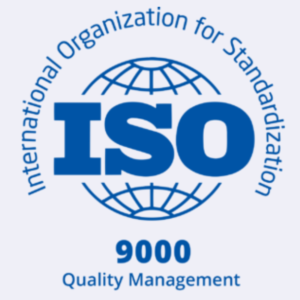Data Migration: The Initial High Cost and Risks
In the dynamic landscape of IT and software systems, businesses encounter two pivotal challenges that often prove to be both costly and complex: Data Migration and Integrations.
These components play a critical role in the efficiency and functionality of systems but can present substantial financial and operational hurdles. In this comprehensive guide, we will delve into the intricacies of these challenges, understanding their nuances, and exploring effective strategies to mitigate costs and risks.
Understanding the Challenge
Data Migration is a pivotal step in the evolution of IT systems, involving the transfer of data from one system to another. Despite its significance, this process often poses an initial high cost and risks that demand careful consideration. The challenges encompass potential data loss, system downtime, and the complexity of mapping data structures between systems.
How to Reduce the Cost and Risks:
1. Thorough Planning
Before embarking on a data migration journey, meticulous planning is imperative. Identify the scope, map out data structures, and create a detailed plan to minimise disruptions during the actual migration. By thoroughly understanding the scope, mapping out data structures, and creating a detailed plan, you can ensure a smoother transition and reduce the likelihood of any unforeseen issues arising.
2. Data Cleaning and Validation
Investing time in cleaning and validating data before migration ensures accuracy and reduces the chances of errors during the transfer. This is a crucial step in the data migration process. By dedicating time to this process, you can ensure that your data is accurate and reliable, minimising the likelihood of errors occurring during the transfer.
3. Incremental Migration
When it comes to migrating data, businesses have the option of choosing between a massive one-time transfer or opting for incremental migration. Rather than executing a massive one-time transfer, opting for incremental migration allows businesses to break down the process into manageable phases, mitigating risks. This approach allows for a more systematic and phased process, which helps mitigate risks and make the overall migration more manageable for businesses.
Alternatives for Migration
Batch Processing
Dividing the data into batches facilitates a more controlled and systematic migration process, reducing the likelihood of errors and enhancing efficiency. This approach allows for a more controlled and systematic migration process, minimizing the chances of errors occurring and ultimately enhancing overall efficiency — leading to smoother transitions and more successful outcomes.
Parallel Processing
Parallel processing, also known as parallel computing, is a technique that involves performing multiple tasks or operations at once. Simultaneously migrating data across multiple phases or components can significantly increase speed and efficiency, particularly when dealing with large datasets — thus achieving their data migration goals in a more efficient manner.
Data Migration Tools
Leveraging specialised tools designed for data migration automates and streamlines the process, providing a structured approach that minimizes manual intervention. These tools are designed specifically for this purpose.. By automating the migration process, these tools reduce the need for manual intervention, which in turn minimises the risk of errors or data loss.
Integrations: The Long-term Costs
Understanding the Challenge
Integrations involve connecting different software applications to ensure cohesive functionality. While crucial for streamlined operations, Integrations come with long-term costs tied to maintenance, updates, and potential compatibility issues.
How to Reduce Long-term Costs:
1. Scalable Solutions
Investing in scalable integration solutions that can grow with the business minimises the need for frequent updates and adaptations, reducing long-term costs. Scalable integration solutions provide businesses with the flexibility and agility they need to stay competitive in today’s fast-paced market.
2. Open APIs
Choosing systems with open APIs (Application Programming Interfaces) ensures seamless connectivity and adaptability to changing business needs. These open APIs serve as a bridge, allowing different software applications to communicate and interact with one another effortlessly.
3. Regular Audits
Conducting regular audits identifies redundant integrations, allowing businesses to eliminate or optimize them, reducing ongoing costs and streamlining operations. This crucial step enables businesses to take the necessary actions to eliminate or optimise redundant integrations, thus reducing ongoing costs and streamlining their overall operations.
Alternatives for Integrations
Middleware Platforms
Middleware platforms play a crucial role in enhancing the integration process by acting as intermediaries between applications. Their main function is to simplify the complexities involved in connecting different applications. By providing a centralized point for managing connections, these platforms make it easier for businesses to streamline their operations and improve overall efficiency.
Custom Integrations
Custom integrations provide a more focused approach, allowing businesses to prioritise the functionalities that are most important to them. This tailored approach ensures that the integration is perfectly aligned with the unique requirements and goals of the business.
API Management Platforms
Utilising API management platforms streamlines the management and monitoring of integrations, enhancing overall efficiency and reducing maintenance costs. Additionally, API management platforms often offer security features such as authentication and authorization, ensuring only authorised users and applications can access the APIs. This not only protects sensitive data but also helps organisations comply with industry regulations and standards.
Conclusion
In conclusion, the challenges posed by Data Migration and Integrations in IT and software systems can be effectively navigated with a strategic approach. Thorough planning, the use of specialized tools, and embracing scalable solutions are key elements in overcoming the complexities associated with these crucial components. By investing in the right strategies today, businesses can pave the way for a robust and cost-effective IT/software system in the long run, ensuring sustainability and adaptability in the ever-evolving technological landscape.
FAQs
What is data migration and integration?
Data migration refers to the process of transferring data from one system or storage location to another. Integration, on the other hand, involves combining data from multiple sources into a unified system. Both processes aim to ensure that data is properly organized, accessible, and usable within an organization.
Why is data migration and integration important?
Data migration and integration are crucial for businesses as they enable the consolidation of data from various sources, leading to improved data quality, streamlined processes, and better decision-making. They also facilitate the seamless transition between systems, software upgrades, or mergers and acquisitions.
What challenges are commonly encountered during data migration and integration?
Common challenges include data compatibility issues, data loss or corruption, system downtime during migration, complex mapping and transformation requirements, resource constraints, and ensuring data security and privacy.
How can data migration and integration be optimized for efficiency?
Efficiency can be optimized by carefully planning the migration process, conducting thorough data profiling and cleansing, automating repetitive tasks, using tools that support data mapping and transformation, conducting regular testing and validation, and involving experienced professionals throughout the project.
What are the key steps involved in a successful data migration and integration process?
The key steps include identifying business goals and objectives, assessing data sources and quality, developing a migration strategy, mapping and transforming data, performing testing and validation, executing the migration plan, monitoring the process, and ensuring post-migration data integrity.
What factors should be considered when selecting a data migration and integration solution?
Factors to consider include compatibility with existing systems, scalability and flexibility of the solution, ease of use, support for data mapping and transformation requirements, security features, vendor reputation and support, cost-effectiveness, and future-proofing capabilities.
What are some best practices for ensuring data integrity during migration and integration?
Some best practices include implementing thorough data validation processes, maintaining data backups during the migration process, conducting regular audits, establishing clear data ownership and governance policies, and involving stakeholders from various departments to ensure comprehensive data integrity checks.
How can data security be maintained during the migration and integration process?
Data security can be maintained by implementing robust encryption methods, restricting access to sensitive data, implementing secure network connections, using proper authentication mechanisms, regularly monitoring system logs for any suspicious activities, and following industry best practices and compliance standards.
What are some common mistakes to avoid during data migration and integration?
Common mistakes to avoid include inadequate planning and documentation, insufficient testing before the actual migration, not considering data quality issues beforehand, overlooking potential system compatibility issues, not involving key stakeholders throughout the process, and neglecting to establish a rollback plan in case of any issues.
How can businesses measure the success of a data migration and integration project?
The success of a project can be measured by assessing factors such as minimal disruption to business operations, accurate and complete data transfer, improved data accessibility and quality, reduced manual effort in data processing, adherence to project timelines and budgets, user satisfaction, and achievement of the intended business goals.









